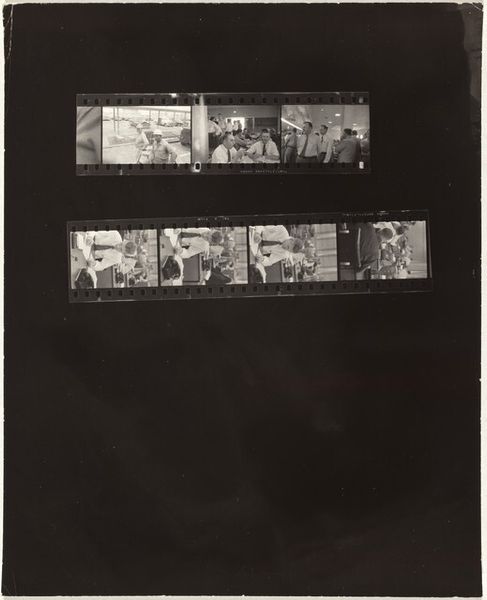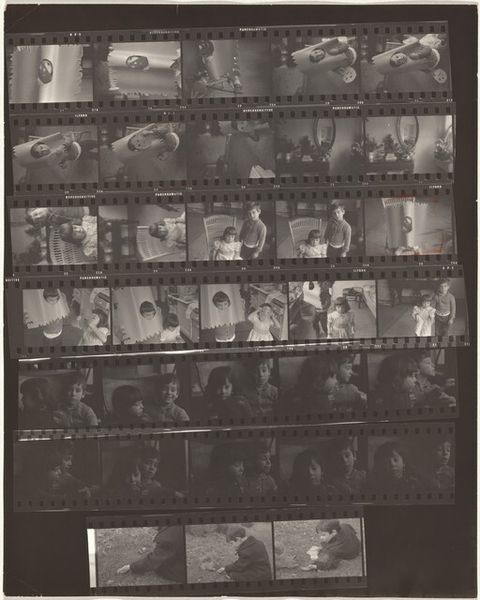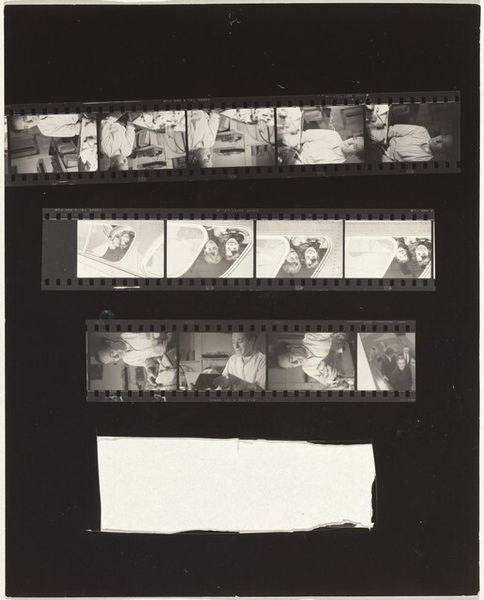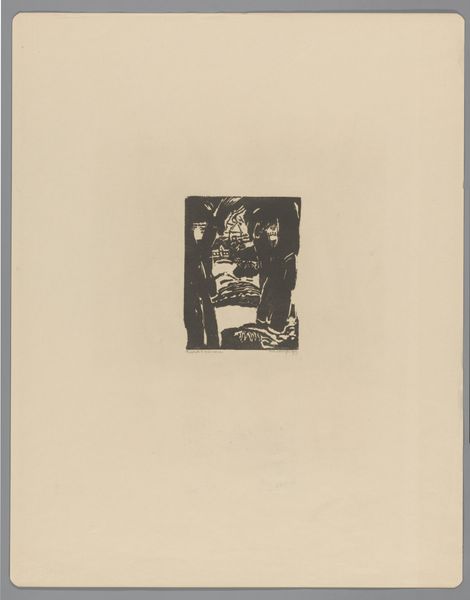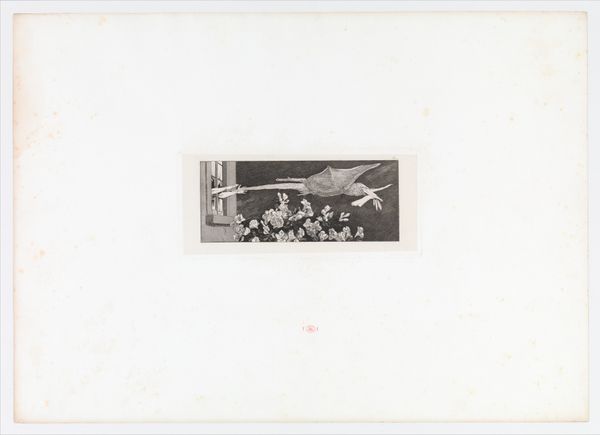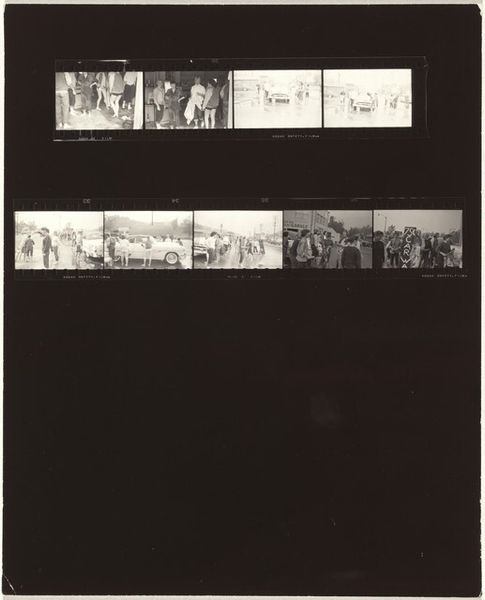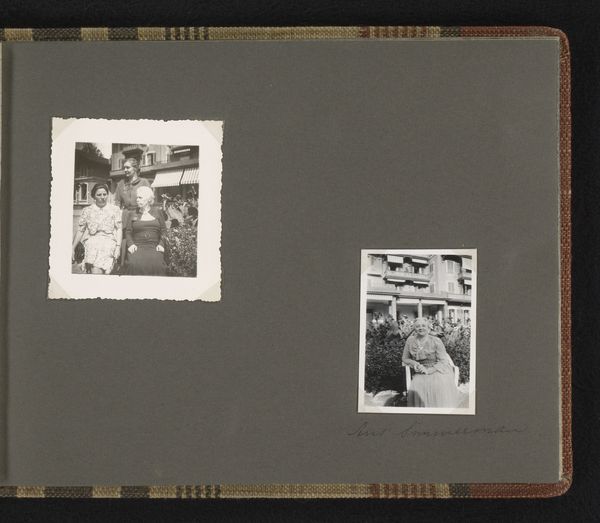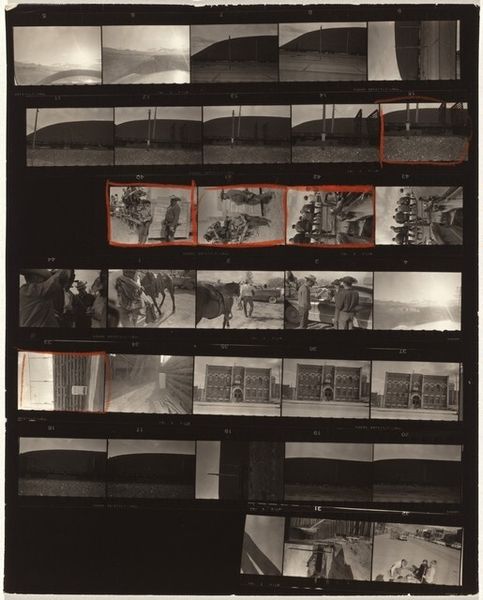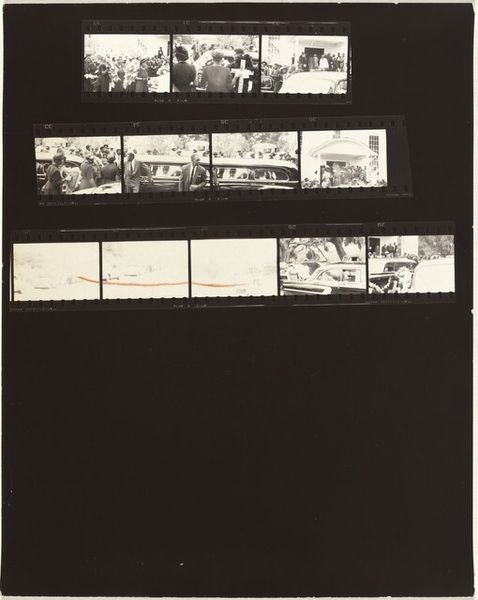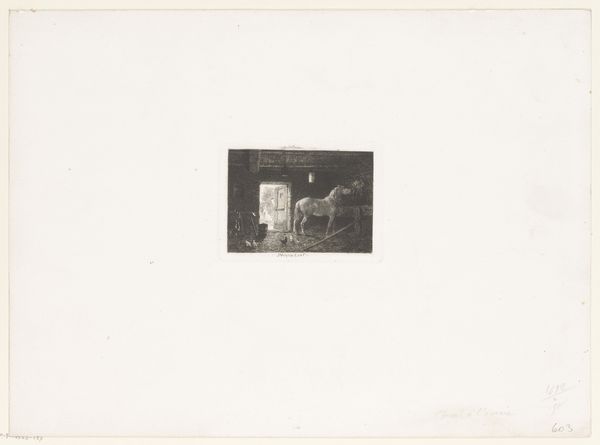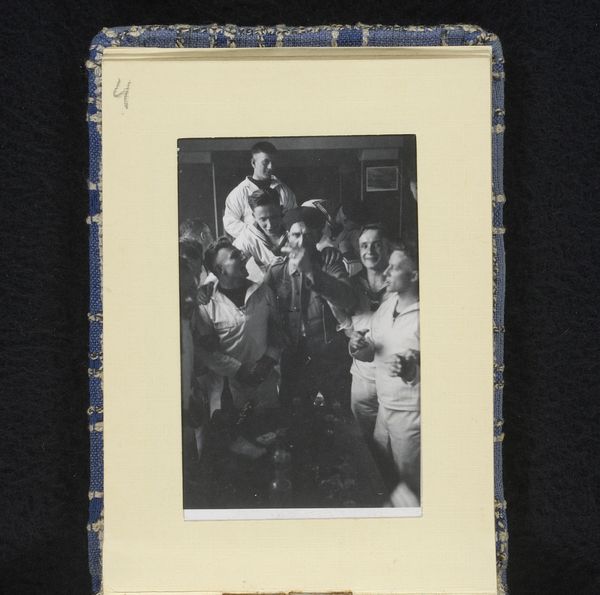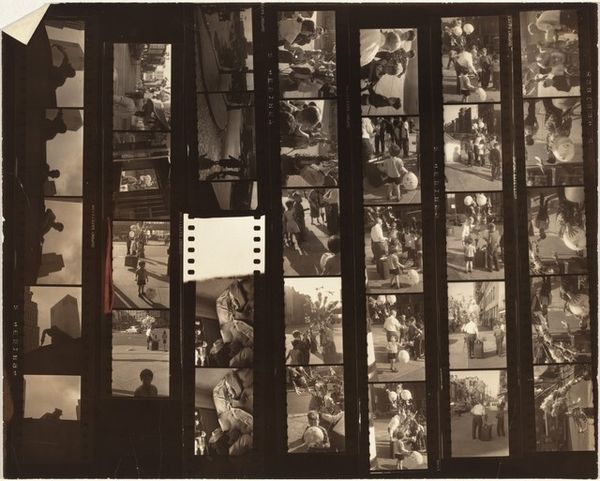
Dimensions: sheet: 29.6 x 21 cm (11 5/8 x 8 1/4 in.)
Copyright: National Gallery of Art: CC0 1.0
Curator: Looking at this gelatin silver print from between 1942 and 1946, made by Robert Frank, titled “Die Kinder (Children) 25-28”, I find myself struck by its unusual arrangement. Editor: Yes, a sheet with several snapshots, almost like a contact sheet but not quite. The top row showing the laughing face of an infant. The fourth image appears to show children waiting, perhaps after a religious ceremony given the dresses and robes visible. There’s an unsettling juxtaposition, though, in placing infantile joy next to an almost faceless group portrait. Curator: Indeed. Frank, during this period, was intensely exploring themes of societal structures. Given the work's timeline, situated in the middle of World War II, the photographs are deeply embedded in social narratives concerning childhood, innocence, and the looming shadows of conflict. The child in images 25-27 could be read as representing a kind of resilience or defiance of circumstance. Editor: Interesting point. Placing that reading alongside the photograph on the lower left which shows a somber line of similarly dressed individuals perhaps implies something about conformity or institutional structure impacting even childhood, wouldn’t you say? What's particularly fascinating is Frank's manipulation of imagery to potentially symbolize both the vulnerability and malleability of children under sociopolitical pressure. Curator: Precisely. Frank has long used photography to comment on cultural shifts. Editor: Viewing the collective piece, one recognizes a statement perhaps of childhood versus historical force? Or societal expectation? This contrast amplifies emotional resonance beyond a traditional portrait, urging engagement with broader, critical themes inherent within our communities. Curator: Ultimately, the power resides within Frank’s capacity to fuse art history with urgent conversations related to childhood and societal constraint during times when youth across globe confronted immense adversity, urging audiences toward deep intersectional introspection regarding who held the political, racial, gender, and economic control— and what impact such controls made across vulnerable population demographics such as those presented across his chosen media. Editor: A potent commentary indeed, framed beautifully within the subtle visual rhetoric Frank utilizes throughout "Die Kinder (Children)".
Comments
No comments
Be the first to comment and join the conversation on the ultimate creative platform.
